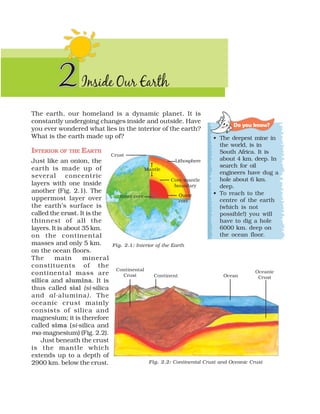The document discusses the interior structure of the Earth. It is composed of several concentric layers, with the crust being the outermost layer. Below the crust is the mantle, which extends to a depth of 2,900 km. The innermost layer is the core, with a radius of around 3,500 km. The Earth's crust is made up of various rock types, including igneous, sedimentary, and metamorphic rocks. Rocks undergo changes in a cyclic process called the rock cycle, where they can transform from one type to another over time through processes like cooling of magma, weathering and erosion, deposition, and changes in pressure and temperature.




